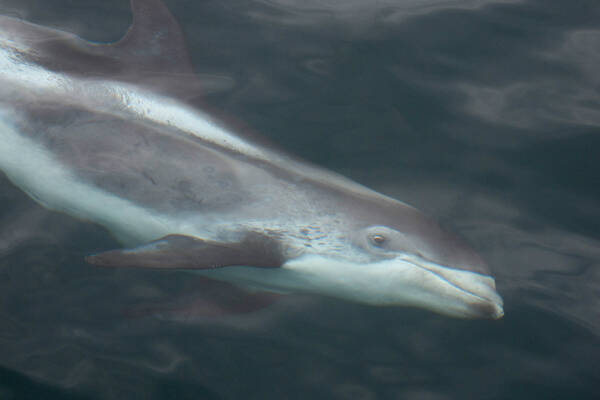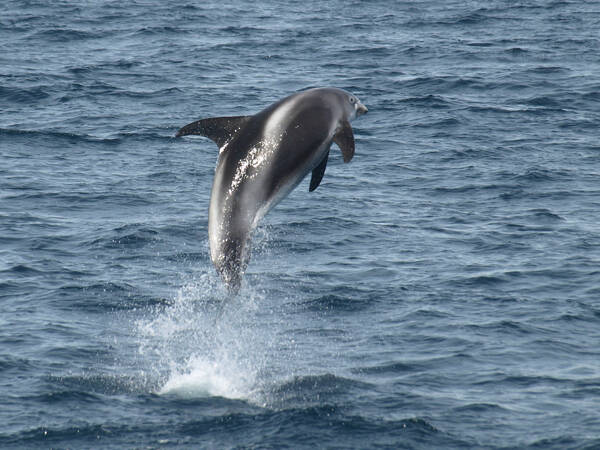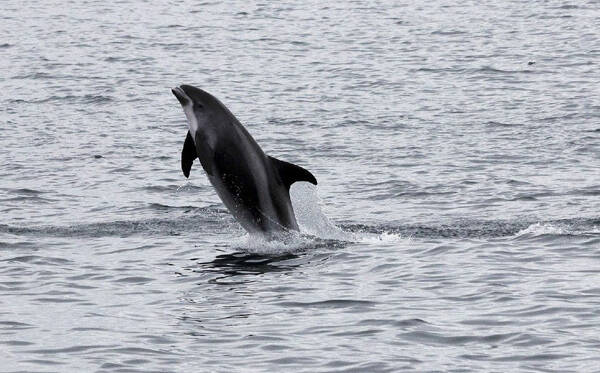Lagenorhynchus albirostris
IUCN
LCBasic Information
Scientific classification
- name:Lagenorhynchus albirostris
- Scientific Name:White-nosed dolphin, white-beaked dolphin, squid-hunting dolphin
- Outline:Cetacea
- Family:Delphinidae dolphin
Vital signs
- length:2.5-2.8m
- Weight:180-275kg
- lifetime:About 25 years
Feature
Not all beaks are white, but from a close distance, the pure white beaks are particularly obvious.
Distribution and Habitat
Origin (sea): Belgium, Canada, Denmark, Faroe Islands, France, Germany, Greenland, Guernsey, Iceland, Ireland, Isle of Man, Jersey, Netherlands, Norway, Russia, Saint Pierre and Miquelon, Svalbard, Jan Mayen, Sweden, United Kingdom, United States.
Wandering (sea): Estonia, Finland, Latvia, Lithuania, Poland.
Inhabits the edge of the continental shelf. Prefers cold waters, accustomed to cruising in deep waters, and may swim close to the coast in summer.
Appearance
The body is stout. The adult body length is 2.5~2.8 meters and the weight is 180~275 kg.
The beak is short and thick, usually white, sometimes dark gray or mottled brown (there are individual differences). The pectoral fins are black and medium in size; the base of the pectoral fins is broad and the end is sharp. Dark stripes extend from the pectoral fins to the corners of the mouth.
The back of the body is mainly black. There are white or light gray stripes on the sides of the body. The black dorsal fin is tall and sickle-shaped, especially in adults; the base of the dorsal fin is broad. There is a white or light gray patch behind the dorsal fin, and the dorsal ridge is often visible. The white part of the abdomen extends to the center of the tail shaft, and there is often a ridge on the abdomen. The tail shaft is thick. The caudal fin is dark gray or black, the rear edge of the caudal fin is concave inward, the tip is sharp, and the central notch is obvious.
The white, gray
Details
White-beaked dolphin (scientific name: Lagenorhynchus albirostris) is called white-beaked dolphin in foreign language, and has no subspecies.

White-beaked dolphins especially like to perform bow riding in front of large, fast-moving ships, but usually lose interest quickly. Some groups are very elusive. They sometimes perform aerial feats (especially when feeding) and will leap into the waves, usually falling back into the water on their side or back. They are typically powerful fast swimmers; in some areas of their range, they may create a rooster-tail spray reminiscent of the white-rumped porpoise. When swimming quickly, they may temporarily lift their entire body out of the water to breathe. They are social species and may travel in groups of 1-35 (large groups of 1,500 have been found); they often swim with fin whales, killer whales, and may also swim with other species.
White-beaked dolphins migrate north to Davis Strait in spring and summer, return to the North Sea in autumn, and winter further south to Cape Cod.

The white-beaked dolphin mainly feeds on herring and cod; it also feeds on squid, octopus and bottom-dwelling crustaceans. It makes a continuous and sharp "click" sound when communicating, foraging and navigating.
There is a lack of breeding data on the white-beaked dolphin. Piglets are usually born in June and September. Newborn piglets are about 1.15 meters long and weigh about 40 kilograms. They reach sexual maturity when they are 1.95 meters long.

There are as many as 100,000 piglets in the northeastern Atlantic, including the Barents Sea, the Norwegian Sea, and the North Sea north of 56°N; there are at least several thousand piglets in the Icelandic waters (Øien 1996). In 1994, the North Sea and adjacent waters were estimated to have 7,856 (CV=0.30). According to a 2005 survey report, there were 22,700 (CV=0.42) in the waters of the European continental shelf in the Atlantic Ocean, of which 10,600 (CV=0.29) used data from the same area in 1994. From the George Coast of the United States to the upper Bay of Fundy and the mouth of the Gulf of St. Lawrence, there were about 2,003 (CV=0.94) (Waringet al. 2008).
Listed in Appendix II of the Convention on International Trade in Endangered Species of Wild Fauna and Flora (CITES).
Listed in China's "National Key Protected Wildlife List": National Class II Protected Animal (effective December 10, 1988, Cetacean*Other Cetaceans).
Listed in the "IUCN Red List of Threatened Species": Least Concern (LC), assessed in 2008.
Protect wildlife and eliminate game.
Maintaining ecological balance is everyone's responsibility!








